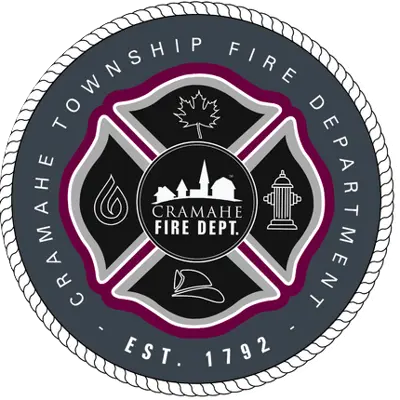Ontario law requires that working smoke alarms are installed properly:
- On every story of the home.
- Outside all sleeping areas.
Avoid installing smoke alarms in or near kitchens and bathrooms, or near air vents, windows and ceiling fans.
This website uses cookies to enhance usability and provide you with a more personal experience. By using this website, you agree to our use of cookies as explained in our Privacy Policy.
Public Notice: Updated Budget Deliberation Meeting Date
We are pleased to share that the 2026 Budget Deliberation Meeting will now take place on
Monday December 15th from 9am-4pm, allowing for full participation from both Council and staff.
In accordance with the Township’s Procedural By-law, the agenda will be posted prior to December 10th.
The second tentative date will be Thursday December 18th, 2025 beginning at 9am.
Thank you for your continued engagement, we look forward to moving ahead with this important part of the budget process.

Public Education
The Township of Cramahe Fire Department is dedicated to creating a safer community by reducing risks through emergency response, prevention, and fire safety education.
Our firefighters:
Attend community events with interactive safety displays
Visit schools and childcare centres to teach fire safety
Provide fire station tours for residents and groups

Smoke Alarms
Working smoke alarms save lives. In Ontario, it's the law to have functioning smoke alarms on every level of your home and outside all sleeping areas. Below are some of the most common questions about smoke alarms.
Where do I need to install a smoke alarm in my home?
Ontario law requires that working smoke alarms are installed properly:
Avoid installing smoke alarms in or near kitchens and bathrooms, or near air vents, windows and ceiling fans.
What should I do if my smoke alarm goes off?
If your smoke alarm goes off, ensure you alert your family members and start your home fire escape plans. Every second counts so get out and stay out!
When should I test and replace my smoke alarms?
How often do I need to change the batteries in my smoke alarm?
How do I manage nuisance alarms?
Carbon Monoxide Alarms
Carbon monoxide is a colourless, odourless gas that can be deadly. Having working carbon monoxide alarms installed properly in your home is not only essential for safety, it’s also required by law.
Where do I need to install carbon monoxide alarms?
Ontario law requires that working carbon monoxide alarms are installed properly
What should I do if my carbon monoxide alarm goes off?
When should I test and replace my carbon monoxide alarms?
How often do I need to change the batteries in my carbon monoxide alarm?
Plan ahead with your household to ensure everyone knows how to escape safely in case of fire.
Identify two ways out of every room, if possible.
Ensure windows open easily and security bars have quick-release devices.
Assign someone to help children, older adults, or anyone needing assistance.
Stay low under smoke and head to the nearest safe exit.
Choose a safe meeting place outside and never re-enter a burning building.
Call 9-1-1 from outside your home.
Make sure everyone knows your home address.
Practice your plan regularly so all family members can get out quickly.
Not all fire risks are obvious. Everyday appliances and overlooked areas can pose serious fire hazards if not properly maintained. Below are some practical tips to help you prevent fires in these often-forgotten spaces.
A fire in a fireplace can reach temperatures form 500 to 600 degrees.
The glass doors on a fireplace can get very hot. Teach children to stay at least 3 feet away from the fireplace.
Children can easily lean on or fall on a fireplace screen or glass doors.
For additional protection:
Doing the laundry is part of everyday life. Clothes dryer safety can be easy to overlook.
To prevent a clothes dryer fire:
These energy saving light bulbs use less electricity. They contain small trace of mercury within the glass. They require special care.
If a compact fluorescent light bulb breaks:
Many homes have a utility closet for the water heater and furnace. This space is intended for utilities only and should not be used as a storage closet.
To keep your utility closet safe:
9 Volt Batteries
9 volt batteries are used in smoke alarms and other household items. Many people don't realize they can be a fire hazard. If a metal item touched the two posts of a 9 volt battery, it can cause a short circuit and generate enough heat to start a fire.
Storing 9 volt batteries:
Lithium Ion Batteries
Rechargeable lithium-ion batteries, also called li-ion batteries, are common in rechargeable products and are safe to use. However, proper handling, storage, and charging is critical to preventing fires. If you are working with or around Li-ion batteries visit the Charged For Life website for safe handling tips.

Cramahe Fire Department
Township of Cramahe Fire Department
Colborne: 232 Purdy Road, Colborne ON
Castleton: 2221 Spring St. Castleton
Email: firedept@cramahe.ca
Phone: 905-355-1219
Sign up to receive information from Cramahe directly to your inbox. Check out the various categories of
general news, and emergency notifications.